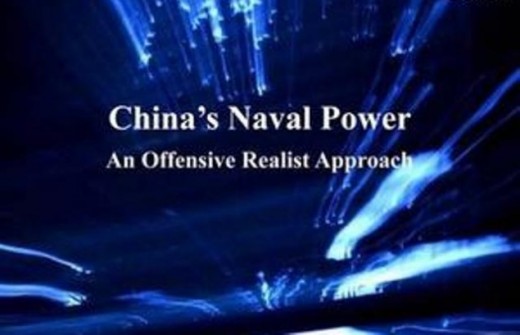China's Naval Power: An Offensive Realist Approach

China’s Naval Power: an offensive realist approach provides a thoughtful analysis of one the most important strategic issues of our times – the drivers behind China’s modernising naval capabilities. The book has two notable strengths. First, the author produces a number of analytical insights based on a detailed and balanced analysis of China’s naval development. Second, the book draws strongly on Chinese language analysis to assess doctrinal and strategic changes of the People’s Liberation Army Navy (PLAN).
Lim uses these strengths within a robust offensive realist framework, applied to a regional and naval context, to argue that the modernisation of Chinese naval forces is driven primarily by an ambition to secure a hegemonic position in the East Asian region. Lim positions this against arguments that he contends are generally used to explain China’s naval modernisation – the securing of Chinese sea lines of communications (SLOCs) , the protection of sovereignty in the South and East China Seas as well as the ambition to recapture Taiwan.
To make the regional hegemon case, the author first argues that China’s main naval interests remain within the first island chain. Through close analysis of China’s growing naval capabilities, Lim reasons that most of the new hardware will be deployed in the near seas. For instance, he notes that no new supply ships have been built in the last decade, significantly limiting China’s projection capabilities beyond East Asia. To support this evaluation, the book also provides evidence that PLAN doctrine has focused on active defence to contain the near seas since the 1980s.
Inside East Asia, the author makes a coherent case that a range of new military platforms are designed to deter and deny US forces that have increased their military engagement in the region in response to a rising China.
Lim also seeks to debunk alternate explanations for China’s naval modernisation. He provides compelling evidence against the Taiwan and SLOCs arguments. The development of amphibious forces is a major obstacle to a military invasion of Taiwan, yet ‘Chinese amphibious forces remain in a puzzling state of relative stagnation.’ Likewise, China’s anti-submarine warfare capabilities remain underdeveloped, even though these are important to protecting SLOCs.
The author’s debunking of sovereignty disputes as a driver of naval modernisation is less compelling. Lim argues that PLAN modernisation stems more from an ambition to prevent China’s near seas being used as approaches by hostile forces. This isn’t particularly supported by an analysis of new maritime capabilities; rather the author contends that, given limited stakes in the island disputes, it’s hard to find a logical path that would lead to an escalation against US forces in the area. However, the book doesn’t provide concrete support for the view that the Chinese leadership or the PLAN views its island disputes as ‘limited stakes’.
One other issue with Lim’s work is that the civilian leadership’s role vis-à-vis the PLAN in developing naval capabilities, doctrine and policy is left unexplained. Lim asserts that much of the modernisation was driven by Liu Huaqing, commander of the PLAN from 1982 to1988. But the author doesn’t assess who is in control of the development and purchase of new capabilities – is it the civilian leadership, the Central Military Commission or someone else? It is possible that the civilian leadership’s reasons for modernisation are not entirely the same as the PLAN’s.
These are, however, minor criticisms of a well-thought out book that makes a significant contribution to the field. The book will be a valuable resource for scholars, practitioners and those with a general interest in China and its maritime development.
Yves-Heng Lim, China’s Naval Power: An Offensive Realist Approach, Ashgate, 2014
Reviewed by Dirk Van der Kley, PhD candidate at the Centre for Arabic and Islamic Studies, ANU





